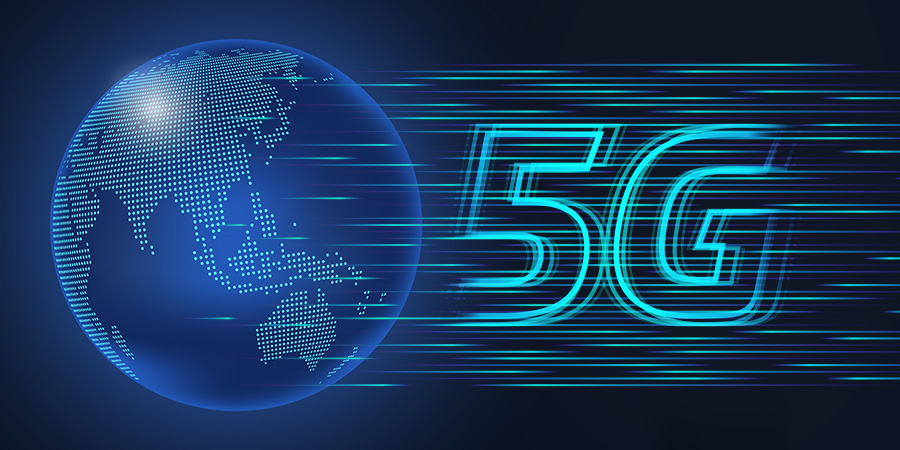Mobile connectivity has proven to be pivotal in driving digital innovation across the Asia Pacific, fostering advancements in various sectors and significantly impacting economic growth. This connectivity underpins transformative technologies that benefit individuals, enterprises, and governments alike, from enhancing healthcare and enabling Industry 4.0 to aiding communities affected by climate-related and geophysical disasters.
The rapid rollout and adoption of 5G technology is set to accelerate these innovations. The Asia Pacific features leading 5G markets such as Australia, Japan, Singapore, and South Korea. Additionally, emerging markets like India are experiencing swift 5G expansion, with tens of millions of new connections expected in 2023.
5G is anticipated to revolutionize sectors across the Asia-Pacific economy, particularly the services and manufacturing sectors. The technology's extensive deployment will support the development of new mobile-based services and enhance existing applications, further driving economic growth and societal benefits.
Related: 35 Cities and Regions Unite to Launch a New Era of 5G-A Connectivity
As telecom operators across the Asia Pacific (APAC) region prepare to invest a staggering USD 259 billion in network infrastructure from 2023 to 2030, a significant chunk of this funding is earmarked for fifth-generation (5G) technology, according to the GSMA's Mobile Economy Asia Pacific 2023 report. This investment is set to reshape the digital landscape of the region, with 5G expected to be a pivotal driver of economic growth and technological advancement.
The report highlights the tremendous impact 5G is poised to have on the APAC economy. By 2030, 5G technology is projected to generate a remarkable USD 133 billion in economic benefits, constituting over 13% of the overall economic impact of mobile technology in the region. This growth will be fueled by the explosive rise in data traffic, driven by an increasing number of broadband users and a surging demand for data-intensive digital content.
Also Read: Asian Telecom Leaders Unveil the Transformative Impact of 5G-Advanced
Malaysia Leads Southeast Asia
A key player in this transformative wave is Malaysia, which has emerged as a leader in 5G connectivity across Southeast Asia. The country’s strategic investments and upgrades have significantly enhanced its 5G network performance. According to Opensignal, Malaysia has made notable strides in 5G deployment, with the nation currently ranking 4th globally in average 5G download speeds at 322.7 Mbps, and 3rd in average 5G upload speeds at 41.5 Mbps. Additionally, Malaysia boasts the second-highest improvement ratio from 4G to 5G download speeds, with a remarkable 14.4-fold increase.
Malaysia's aggressive 5G rollout is not only addresses the improvement of broadband speeds but also addresses bridging the digital divide. The government is focusing on extending high-speed connectivity to underserved rural areas, aiming to provide equal access to digital opportunities across the nation. This effort is expected to not only enhance digital inclusion but also stimulate economic activities and innovation in less accessible regions.
By 2030, the APAC region is projected to have around 1.4 billion 5G connections, accounting for about 41% of total mobile connections. Malaysia’s achievements are indicative of the broader regional trend, where 5G is set to revolutionize connectivity and drive significant economic benefits.
Latest Industry News: Malaysia's Communications Minister Teases Major 5G Development
Monetizing 5G
Last year, Thai state-owned National Telecom (NT) announced a partnership with telecom operator, AIS, to advance its 5G strategy. Under the partnership, NT will lease RAN equipment and utilize AIS' 700 MHz spectrum, with regulatory approval granted. The deal involves AIS constructing 13,500 base stations over two years and providing NT with free domestic roaming during the construction period. After the network is completed, a roaming fee will be applied.
South Korea, a pioneer in 5G technology, also remains at the forefront of recent advancements. South Korean telecoms have heavily invested in 5G applications, particularly in augmented and virtual reality (AR/VR). For example, SK Telecom’s ‘Jump AR’ lets users virtually explore e-sports arenas and other venues. The country has also developed smart cities by integrating IoT with 5G; as evident in Bucheon, where the technology helps manage traffic, conserve energy, and enhance public safety. These innovations enable telecom companies to generate new revenue streams beyond traditional data plans.
As 5G technology becomes more widespread, the race to monetize its capabilities intensifies. To attract new customers and boost revenue from existing ones, operators need to offer compelling experiences. Extended reality (XR) emerges as a key solution, promising immersive consumer experiences that leverage 5G's high speed, low latency, and increased capacity.
Additionally, 5G fixed wireless access (FWA) offers a valuable revenue stream, especially in regions with limited fixed broadband infrastructure or where outdated technologies like xDSL dominate. While consumer services are a major revenue source, the enterprise sector is seen as the primary growth driver. Operators are focusing on enabling digital transformation through 5G standalone (SA) and private 5G networks, which are crucial for capitalizing on enterprise opportunities and driving overall monetization strategies.
Read More: Exploring 5G Monetization Strategies in the Asia Pacific





